Golden wattle, Australian Golden Wattle
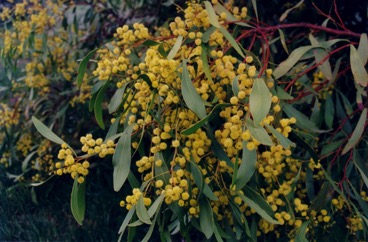
It is a warm temperate plant. It occurs naturally in eastern Australia. It prefers shallow sandy soils. It is drought resistant but frost tender when young. It will grow in part shade or full sun. They do not suit high altitudes or very wet conditions. Naturally it grew in areas with a rainfall of 35-70 mm but now grows in areas with rainfall up to 2,280 mm. It suits hot dry areas. It can grow in arid places. It grows between 1,450-2,000 m above sea level. It suits hardiness zones 9-11. Tasmania Herbarium.
Also known as:
Karrank, Tunline
Synonyms
- Acacia petiolaris Lehm.
Edible Portion
- Seeds, Gum, Flower nectar
Where does Golden wattle grow?
Found in: Africa, Asia, Australia, East Africa, East Timor, France, India, Indonesia, Israel, Italy, Kenya, Libya, Mediterranean, New Zealand, North Africa, Portugal, SE Asia, South Africa, Southern Africa, Spain, Tanzania, Tasmania, Timor-Leste, United States
Notes: There are about 1,350 Acacia species. Over 1,000 occur in Australia. Also as Mimosaceae.
Growing Golden wattle, Australian Golden Wattle
Cultivation: It is grown from seed. The seed need treatment to break the hard seed coat. Normally this is by putting the seeds in very hot water and letting the water cool down overnight then planting the seeds immediately. Seed can be sown directly in the field. It can also be grown from cuttings.
Edible Uses: The seeds are eaten. The gum is eaten. The nectar from the flowers is used for a drink.
Production: Trees grow quickly. They are short lived lasting 10-15 years. The pods open, dropping the seed to the ground.
Nutrition Info
per 100g edible portion| Edible Part | Energy (kcal) | Protein (g) | Iron (mg) | Vitamin A (ug) | Vitamin c (mg) | Zinc (mg) | % Water |
|---|---|---|---|---|---|---|---|
| Seeds | - | - | - | - | - | - | |
| Gum | - | - | - | - | - | - | |
| Nectar | - | - | - | - | - | - |
Golden wattle, Australian Golden Wattle Photos

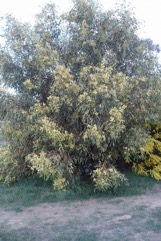
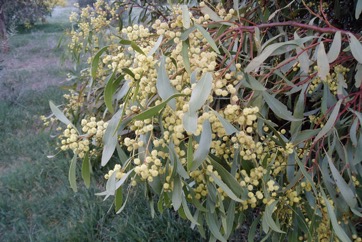
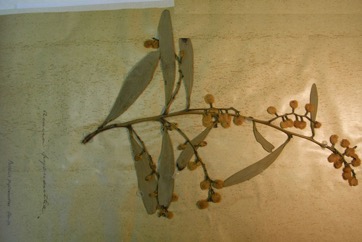
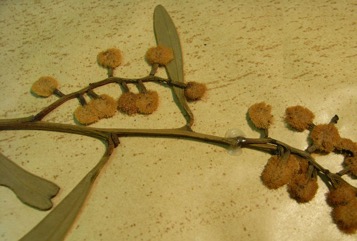
References
Ambasta S.P. (Ed.), 2000, The Useful Plants of India. CSIR India. p 7
Blamey, M and Grey-Wilson, C., 2005, Wild flowers of the Mediterranean. A & C Black London. p 80
Bodkin, F., 1991, Encyclopedia Botanica. Cornstalk publishing, p 31
Bonney, N., 1997, Economic Native Trees and Shrubs for South Australia. Greening Australia (SA) inc. Campbelltown SA 5074 p 16
Boomsma, C.D., 1972, Native Tree of South Australia. Woods & Forests Department South Australia, Bulletin No.19. p 42
Clarke,P. A., 2013, The Aboriginal Ethnobotany of the Adelaide Region, South Australia. Transactions of the Royal Society of South Australia. (2013), 137(1): 97-126
Cronin, L., 1989, The Concise Australian Flora. Reed. p 127
Cundall, P., (ed.), 2004, Gardening Australia: flora: the gardener's bible. ABC Books. p 78
Dashorst, G.R.M., and Jessop, J.P., 1998, Plants of the Adelaide Plains & Hills. Botanic Gardens of Adelaide and State Herbarium. p 78
De Angelis, D., 2005, Aboriginal Plant Use of the Greater Melbourne Area. La Trobe University Environment Collective
Elliot, W.R., & Jones, D.L., 1982, Encyclopedia of Australian Plants suitable for cultivation. Vol 2. Lothian. p 103
Etherington, K., & Imwold, D., (Eds), 2001, Botanica's Trees & Shrubs. The illustrated A-Z of over 8500 trees and shrubs. Random House, Australia. p 56
Gott, B & Conran, J., 1991, Victorian Koorie Plants. PO Box 666 Hamilton, Victoria 3300, Australia. p 45
Greig, D., 1996, Flowering Natives for Home Gardens. Angus & Robertson. p 39
Hall, N. et al, 1972, The Use of Trees and Shrubs in the Dry Country of Australia, AGPS, Canberra. p 350
Hemphill, I, 2002, Spice Notes. Macmillan. p 413
Holliday, I., 1989, A Field Guide to Australian Trees. Hamlyn. p 28
Hussey, B.M.J., Keighery, G.J., Cousens, R.D., Dodd, J., Lloyd, S.G., 1997, Western Weeds. A guide to the weeds of Western Australia. Plant Protection Society of Western Australia. p 180
ILDIS Legumes of the World http:www;ildis.org/Legume/Web
Lazarides, M. & Hince, B., 1993, Handbook of Economic Plants of Australia, CSIRO. p 6
London J. Bot. 1:351. 1842
Lord, E.E., & Willis, J.H., 1999, Shrubs and Trees for Australian gardens. Lothian. p 41
Paczkowska, G . & Chapman, A.R., 2000, The Western Australian Flora. A Descriptive Catalogue. Western Australian Herbarium. p 320
Robins, J., 1996, Wild Lime. Cooking from the Bush food garden. Allen & Unwin p 166
Royal Botanic Gardens, Kew (1999). Survey of Economic Plants for Arid and Semi-Arid Lands (SEPASAL) database. Published on the Internet; http://www.rbgkew.org.uk/ceb/sepasal/internet [Accessed 27th April 2011]
Smith, K & I., 1999, Grow your own bushfoods. New Holland. Australia. p 98
Tasmanian Herbarium Vascular Plants list p 39
Williams A. & Sides, T., 2008, Wiradjuri Plant Use in the Murrumbidgee Catchment. Murrumbidgee Catchment Management Authority. Wagga Wagga, p 9
World Checklist of Useful Plant Species 2020. Royal Botanic Gardens, Kew
Young, J., (Ed.), 2001, Botanica's Pocket Trees and Shrubs. Random House. p 50
Zola, N., & Gott, B., 1992, Koorie Plants Koorie People. Koorie Heritage Trust. p 51